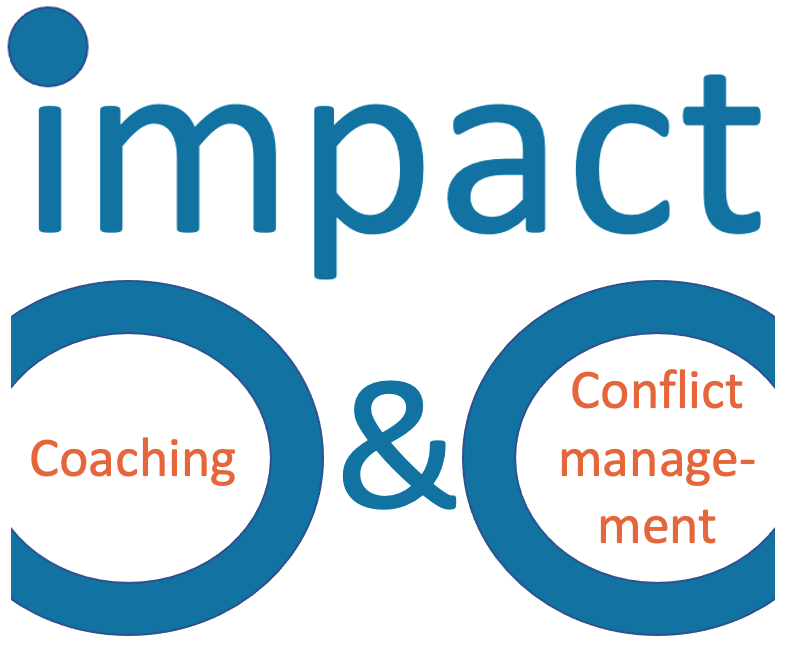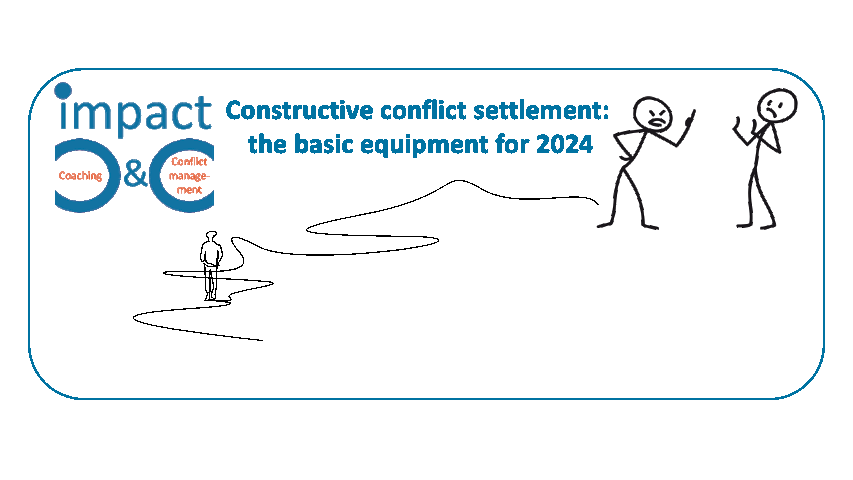Let’s start 2024 hoping that the virulent conflicts that have been surrounding us in 2023 will be solved in a constructive way. And those we will encounter in 2024.
But what sounds like a banal new years’ wish – it is certainly one of those endlessly repeated formulae to be read whenever talk is about conflict – might have its challenges!
It might be worth re-considering what it means to “settle a conflict in a constructive manner”. The Berghof Institute in Berlin pointed out some interesting points in a paper already published in 1997 (Berghof Report Nr.3). We think it is still (or again) worth looking at what they understand by “constructive”. Here’s some of what they say:
- 🗝 Constructive conflict resolution does not only concern the result of a settlement but the way the process of settling is fashioned. It is about the manner the results are reached, despite all the injuries and anger the people involved feel.
- 🗝 ‘Constructive’ is a focus. It is a behaviour that sets the ground for shaping a positive result.
- 🗝 It is (most probably) not a state of mind we arrive at at one point, it’s a process we have to go through several times in any given conflict.
The constructive focus:
- 🔦 Which conduct in the settlement process serves “the bigger whole”?
This, in a marital conflict would be the family, in a conflict in a senior management team the company, in a conflict between colleagues their work relationship or a project. - 🔦 What can everybody do during settlement already that all parties involved feel better than before?
- 🔦 What is a / the desirable future to work towards?
- 🔦 What could be the underlying imbalance of the existing situation?
- These could be invalid assumptions, overcome or imbalanced arrangements, different personal preferences or internal or external changes.
The basic equipment:
The authors present their special selection of basic constructive conflict settlement qualities, a set of “capabilities” selected because indispensable in order to stay in a constructive mode.
- ✅ Conflicts bring out the worst in people – in our conflict partners, but also in ourselves. The capability to always regain our (virtuous, real) self is an important ability continuously in demand during conflict settlement.
- ✅ In conflicts we turn more and more away from those we are in conflict with, which has an escalating effect in itself: so, to keep up the ability to turn (back) towards the other person(s) is vital to stay constructive.
- ✅ Self-perception: the capability to detect our own emotions, needs and interests and to be able to verbalize them as well as critical self-reflection which is necessary to detect at what point we turn into somebody in the course of a conflict who we never wanted to be.
- ✅ The capability to dispute, as the capability to balance one’s own emotions, standpoints and interests with trying to see the situation from the other party’s angle, as well as acknowledging the other party’s right to their own feelings, standpoints and interests. This is psychological courage.
- ✅ Social courage is the capability to expose ourselves to social situations which we consider bearing risks for ourselves – for example of discomfort, vulnerability – and which are intimidating. And this out of the conviction that the “constructive” path is the right one.
Well, you might say, that is all very well, provided the other party will do the same! In the understanding of the authors constructive means unilateral. They ask to read their list as path to be adopted independent of the other parties’ actions.
Constructive conflict resolution starts well before any results are on the horizon, and “constructive” calls for modes of behaviour which do not come natural in a conflict – and that’s why constructive conflict resolution is such a challenge. Constructive conflict settlement can be hard work.
Perhaps we will fail. And fail again. Constructive conflict settlement is a process. The hard work in ‘constructive’ can be to always re-focus on these basics: the focus and the equipment.
The rewards may be manifold: less knotted up stomachs, more full nights’ sleeps, the end to smoldering or stalled situations that have been with us for quite a while. Even improvements and ways forward in seemingly unsolvable situations.
We from impact believe in the feasibility and power of this approach and, as in the past, we will in 2024 support companies who are starting along this route in any given situation. We wish us all the courage and the stamina to go the path of constructive conflict settlement in 2024 whenever it gets difficult.
_______
Literatur: Eva Maringer, Reiner Steinweg “Konstruktive Haltungen und Verhaltensweisen in institutionellen Konflikten“, Berghof Institut, 1997

